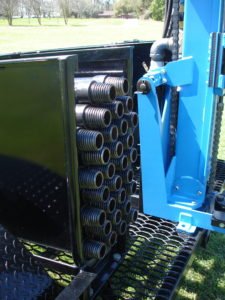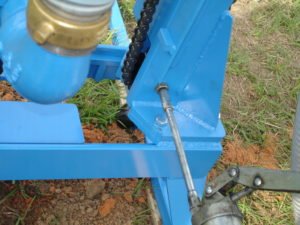By Joe Haynes, Lone Star Drills president
You get what you pay for. Keep this in mind when purchasing your next rotary drill. Instead of selecting the cheapest drill, think about your long-term business goals. A drill that achieves a high return on investment withstands challenging soil conditions, such as moving from geotechnical testing to water well drilling. Not only that, but a quality drill is backed by a trustworthy manufacturer known for great customer service.
Consider these tips before purchasing your next rotary drill:
1. Assess Your Application
To avoid costly replacements and a short service life, choose a drill that meets the challenges you’re up against without falling apart after a use or two — which, sadly, is more common than you might think with some drills.
Different drills perform better in certain soil conditions. For example, mechanical drills take 6-inch boreholes to depths of 100 to 200 feet in sand, clay and loamy soils. This is ideal for most water well and geotechnical projects. Hydraulic drills achieve greater depths, up to 300 feet, and generate enough pushdown force for drilling in rugged rock formations. For a greater diversity of projects, consider a trailer-mounted drill rig. These reach depths of 400 feet and save time spent loading and unloading a drill from the back of a utility vehicle.
 2. Take A Closer Look
2. Take A Closer Look
Don’t be deceived by looks. Carefully examine the drill before you purchase it to make sure it includes quality components. Look for a heavy-duty welded steel frame, 2-inch diameter drill pipes and connections made of heat-treated alloy steel to ensure the drill withstands challenging conditions. Avoid drills constructed from 1-inch or less diameter pipes, which typically only handle small-scale projects.
3. Minimize Maintenance To Maximize Savings
Drill features that simplify maintenance make it easy for you to achieve your drill’s full service life — 15 to 20 years — without added downtime. For example, easily accessible adjustment screws and locking nuts help reduce downtime when removing slack from the drive chain. Conveniently located greasing points also save time during routine maintenance checks.
 4. Select a Reliable Manufacturer
4. Select a Reliable Manufacturer
The last situation any driller needs is a project standstill with no support. Waiting on replacement parts or troubleshooting advice quickly eats up valuable project time. Look for a manufacturer that offers 24/7 technical support and keeps spare parts on hand for fast delivery. It’s also important that the manufacturer provides operator manuals and offers onsite training as a proactive approach to avoid operational issues.
With these tips, you’re set for selecting the right drill for maximum ROI. For any additional questions, contact us.
 4. Select a Reliable Manufacturer
4. Select a Reliable Manufacturer